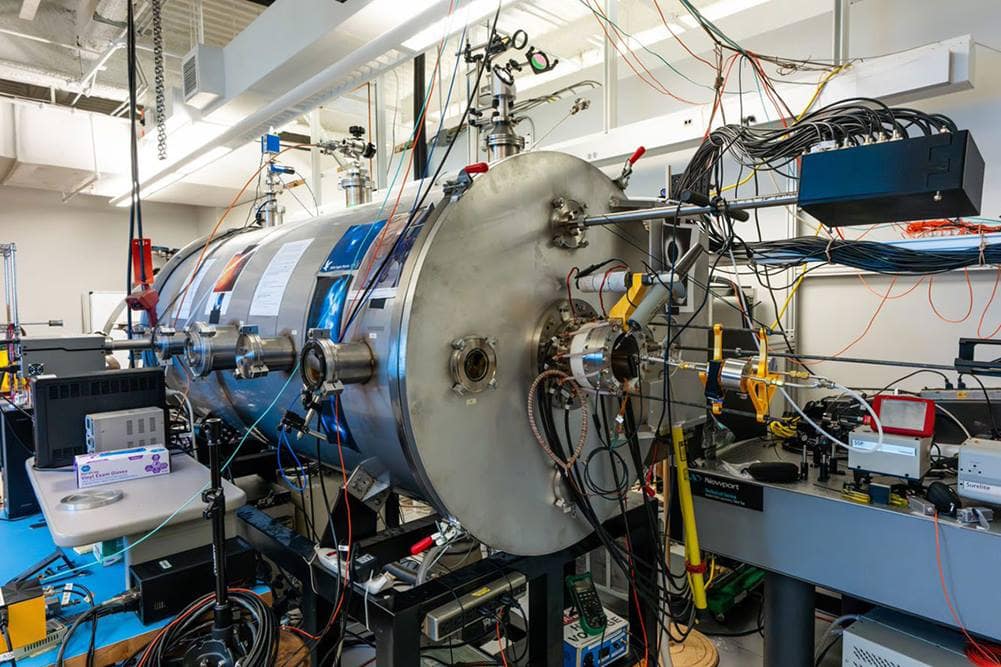Embry-Riddle Earns $2.25 Million in NASA Funding to Build New Space Instruments and Conduct Space Weather Research

Researchers in Embry-Riddle Aeronautical University’s Space and Atmospheric Instrumentation Lab (SAIL) have been selected to receive a combined $2.25 million across two NASA grants.
The grant funding will be used to develop new instruments for future satellite and rocket missions, as well as study the effects of thunderstorm-generated acoustic and gravity waves on space weather in the ionosphere. Improving our understanding of the connections between weather events on Earth and in space could lead to advancements in radio communications, power grid stability and satellite-associated technologies, such as GPS.
Improving Satellite Communications
Björn Bergsson, a Ph.D. student in Engineering Physics, is working on the space weather research, which received $953,000 in funding from NASA.
“The importance of this work is what inspires me,” said Bergsson, who would like to work for NASA after he earns his degree. “Understanding the atmospheric, thermosphere and ionospheric conditions that generate traveling ionospheric disturbances is important because these disturbances can adversely affect radio communication around the globe and potentially pose challenges to spacecraft operations.”
The goal of the project, funded by the NASA Living with a Star program and led by Dr. Shantanab Debchoudhury, a research scientist in the College of Arts and Sciences, is to develop a way to understand and quantify how weather conditions on Earth influence space weather conditions. Doing so will help to better predict those conditions in the future.
The project is a collaborative effort across multiple research groups in the Center for Space and Atmospheric Research (CSAR), within the Department of Physical Sciences, Debchoudhury said, involving co-investigators Dr. Chris Heale, Dr. Pavel Inchin and Dr. Mathew Zettergren from the ÉCLAIR (Experimental and Computational Laboratory for Atmospheric and Ionospheric Research) research group, along with a co-investigator from Virginia Tech.The researchers plan to compare simultaneous thunderstorms, acoustic and gravity waves, and traveling ionospheric disturbances in order to create a database of such concurrent events spanning 2010-2020.

New instrumentation will be tested in this plasma chamber. (Photo: Embry-Riddle/Bernard Wilchusky)
CubeSat Development
The second of Embry-Riddle’s two recent awards — this one for $1.13 million from the NASA Heliophysics Technology and Instrument Development for Science program— is intended to develop an instrument known as a double Langmuir probe that is small enough to fit on a CubeSat but powerful enough to assess both the density and the electron temperature of plasma, the fourth state of matter containing positive ions and free electrons, in space. Current state-of-the-art Langmuir probes cannot measure electron temperatures from a CubeSat-sized satellite.
“Results from instruments like these can be used for modeling how the sun interacts with the Earth and help with understanding the associated effects, like the impact of solar flares on the Earth,” said Dr. Robert Clayton, a research scientist in the College of Arts and Sciences, who is the principal investigator on the project.
Solar flares can disturb radio communications, increase drag on Earth-orbiting satellites, degrade satellite communication and the precision of GPS measurements, and cause expensive and disruptive damage to satellites and power grids.
According to Clayton, the probes will be developed and tested in a simulated space environment in SAIL’s plasma chamber.
Dr. Aroh Barjatya, director of SAIL and a co-investigator on the instrument grant, said that both grants represent significant accomplishments.
"NASA's funding of this new instrument proposal led by Dr. Clayton is a vote of confidence from the peer review community in SAIL's ability to build instruments that will enable crucial space weather measurements from a small satellite platform," said Barjatya. "And SAIL scientists are forging further ahead in doing fundamental space weather research as showcased by Dr. Debchoudhury's grant.”
The research will involve multiple undergraduate and graduate students.

 Michaela Jarvis
Michaela Jarvis